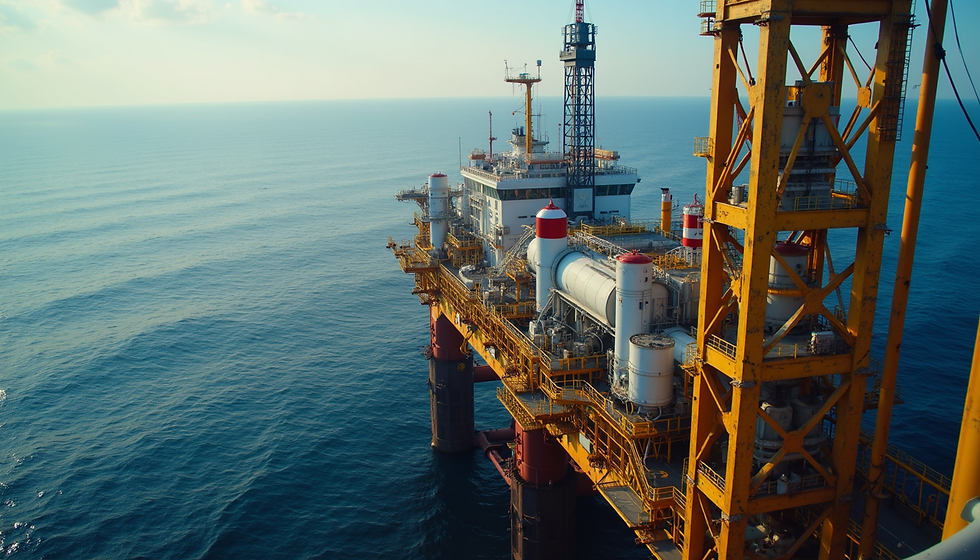Recovering from an engine room fire on a vessel involves several critical steps
- Green Shift Group

- Mar 30
- 3 min read
A major engine room fire is a nightmare for seafarers. Fire in the engine room not only disables the vessel's propelling plant but also leads to a complete blackout situation, which can result in collision or grounding of the vessel.
Recovering from an engine room fire on a vessel involves several critical steps to ensure the crew's safety, the environment, the vessel's integrity, and the restoration of operational capabilities. Every minute is USD 200.000.- in repairs, excluding the vessel's lost time.
Here's a quick guide to engine room fire recovery. Take notes: No engine room fire is alike!
Safety First
Ensure the Fire is Extinguished
Before entering the engine room, confirm that the fire is entirely out and will not reignite. If available, use thermal imaging cameras.
Personal Protective Equipment (PPE)
When entering the engine room after a fire, wear appropriate PPE, such as breathing apparatus and fire-resistant clothing, and follow company procedures.
Ventilate
Carefully ventilate the engine room to remove smoke and toxic fumes once it has been confirmed that the fire won't ignite again. Care should be taken to ventilate the vessel to avoid smoke in the accommodation.
Damage Assessment
Check for Hot Spots
- Use thermal cameras or touch (carefully) to identify any remaining hot spots that could reignite.
Visual Inspection
- Conduct a thorough visual inspection of the engine room to identify the extent of damage to machinery, electrical systems, propulsion, pipe systems, tanks, reservoirs, leaks, and structural components.
Assess Structural Integrity
- Check for damage to the engine room's bulkheads, decks, tanks, voids, and other structural components.
Propulsion
- Ensure with the home office and H&M that the voyage can be safely continued by the vessels's power and/or prepare for towage to the port facility.
Containment and Cleanup
Containment
- Contain fuel or oil spills to prevent further hazards and environmental contamination.
Remove Debris
- Remove debris and damaged components from the engine room.
Decontamination: Clean all surfaces to stop the damage, e.g., chlorides, soot, oil, and other residues left by the fire and firefighting efforts.
Restoration of Systems
Electrical Systems
- Inspect and test electrical systems and wiring. Replace any damaged components.
Machinery
- Evaluate the condition of the propulsion system, generator sets, pumps, and other machinery and perform necessary (emergency)repairs or replacements.
Fire Suppression Systems
- Check and recharge fire suppression systems, ensuring they are fully operational.
Restoration of Operations
System Tests
- Perform comprehensive tests of all restored systems and machinery to ensure they operate correctly.
Trial Run
- Conduct a sea trial or operational test to verify that the vessel is fully operational and safe to continue its voyage.
Repair assessment
- Prepare repair specifications and repair projects.
Documentation and Reporting
Incident Report
- Prepare a detailed incident report; crew statements are essential to portray the fire scenario, including the cause of the fire, actions taken to extinguish it, and the extent of the damage.
Insurance
Inform the vessel's H&M and PI Club insurance companies and provide them with the incident report and required documentation.
Authorities
- As regulations require, report the incident to the relevant maritime authorities.
Investigation and Root Cause Analysis
Identify the Cause
- Conduct a thorough investigation to determine the cause of the fire (e.g., fuel leak, electrical fault, overheating).
Preventive Measures
- Implement corrective actions to address the root cause and prevent future' fleet vise' occurrences. This may include maintenance practices, procedures, equipment, or crew training changes.
Crew Support
Medical Check-Up
- Ensure all crew members undergo a medical check-up to address any potential smoke inhalation or other injuries.
Counseling
- Provide psychological support or counseling if needed, as dealing with a fire can be a traumatic experience.
Training and Drills
Review Procedures
- Review and update fire safety and emergency procedures based on lessons learned from the incident.
Conduct Drills
- Fire drills reinforce disciplined training and ensure the crew is prepared for future emergencies.
Continuous Improvement
Feedback Loop
- Create a feedback loop where lessons learned from the fire incident and recovery process are continuously integrated into the vessel's safety management system.
Safety Culture
- Foster a strong safety culture among the crew and within vessel manager, emphasizing the importance of fire prevention, regular maintenance, and preparedness.
By following these steps, a vessel can effectively recover from an engine room fire safely and soundly, ensuring the safety and well-being of the crew and restoring its operational capabilities.
Links:
Fire in the Engine Room: A Guide for Ship Engine Cadets and Students – Maritime Education (maritimeducation.com)




Comments